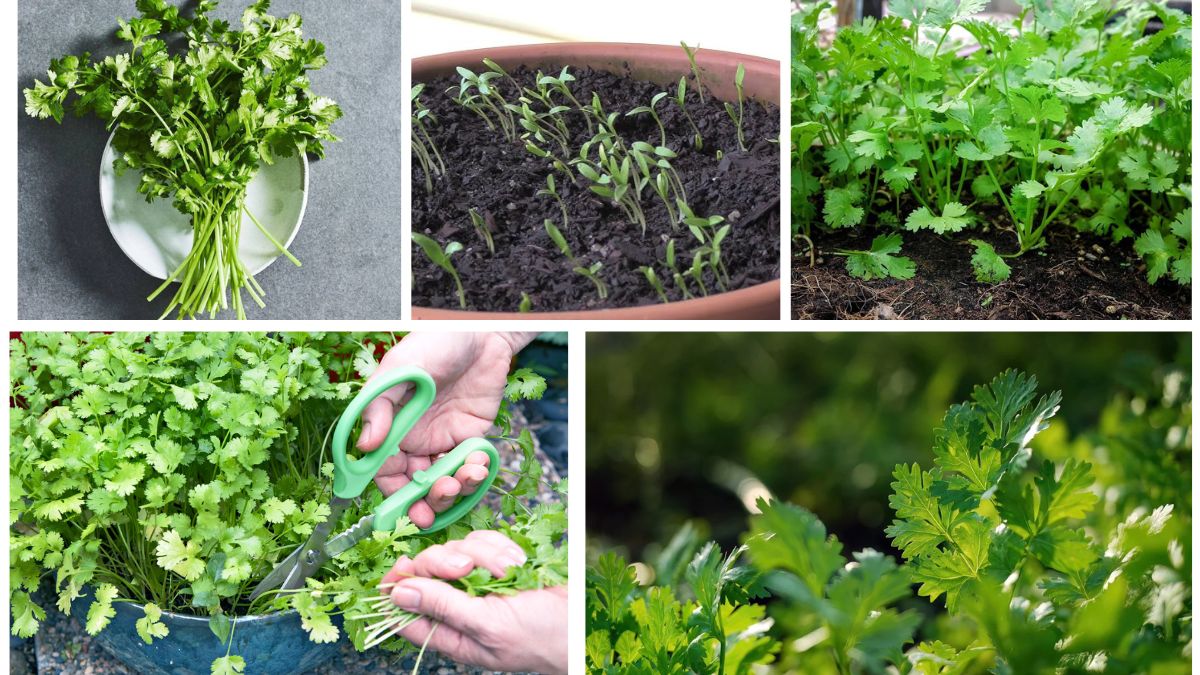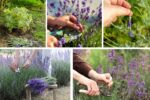Coriander, also known as cilantro or Coriandrum sativum, is one of the most popular herbs grown worldwide. It is valued not only for its aromatic leaves but also for its flavorful seeds. Whether you enjoy sprinkling fresh coriander leaves over curries, salads, or soups, or grinding the seeds for spice blends, growing coriander at home ensures a constant supply of this versatile herb.
This article provides a complete step-by-step guide to successfully growing coriander in your home garden, balcony, or even in pots indoors.
Why Grow Coriander at Home?
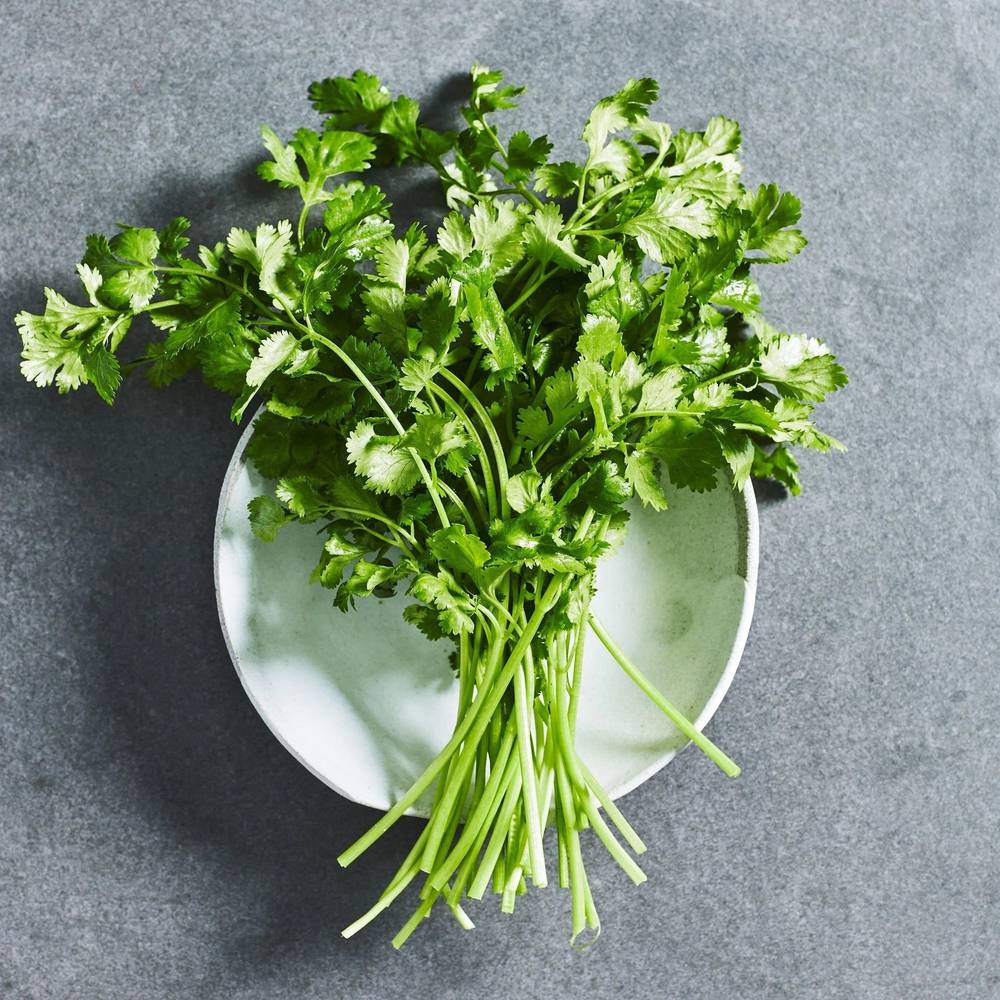
Before diving into the steps, let’s understand why growing coriander at home is such a rewarding choice:
- Freshness and Flavor – Homegrown coriander tastes more vibrant than store-bought bunches that wilt quickly.
- Cost-Effective – A small packet of seeds can produce weeks of continuous harvests.
- Chemical-Free – You have full control over soil, fertilizers, and pesticides.
- Quick Growth – Coriander matures fast, with leaves ready to harvest within 3–4 weeks.
- Dual Use – Both the leaves (cilantro) and seeds (coriander) can be harvested.
Ideal Growing Conditions for Coriander
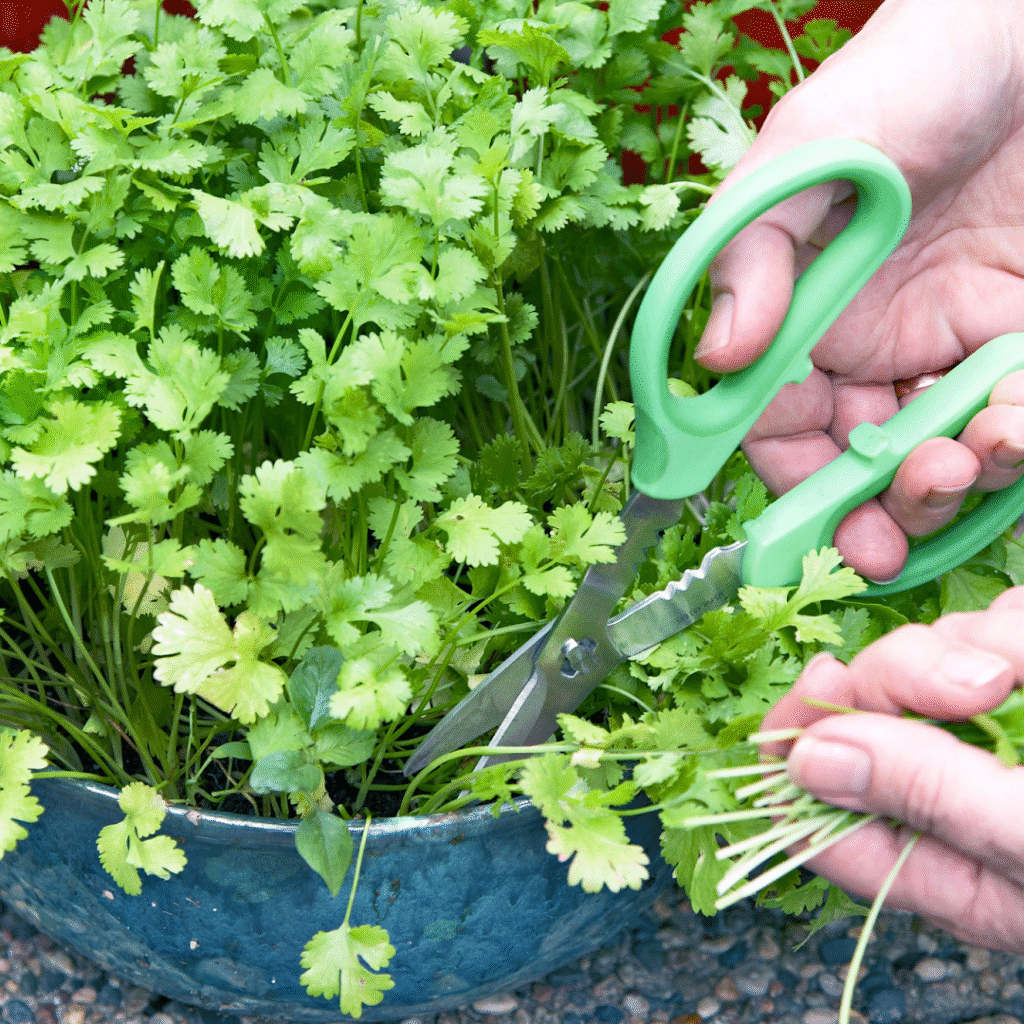
Coriander grows best in mild climates and requires specific conditions to thrive.
1. Temperature
- Prefers temperatures between 17°C to 27°C (62°F to 81°F).
- Extremely hot weather can cause bolting (premature flowering), reducing leaf production.
2. Sunlight
- Needs 4–5 hours of direct sunlight daily.
- In hotter climates, partial shade is beneficial to prevent drying and bolting.
3. Soil
- Well-drained loamy soil enriched with organic matter is ideal.
- Optimum pH range: 6.2 – 6.8.
- Avoid clay-heavy soils that retain too much moisture.
4. Watering
- Coriander prefers consistent moisture but not waterlogging.
- Water lightly every 2–3 days, ensuring soil remains moist but not soggy.
Step-by-Step Guide to Growing Coriander at Home
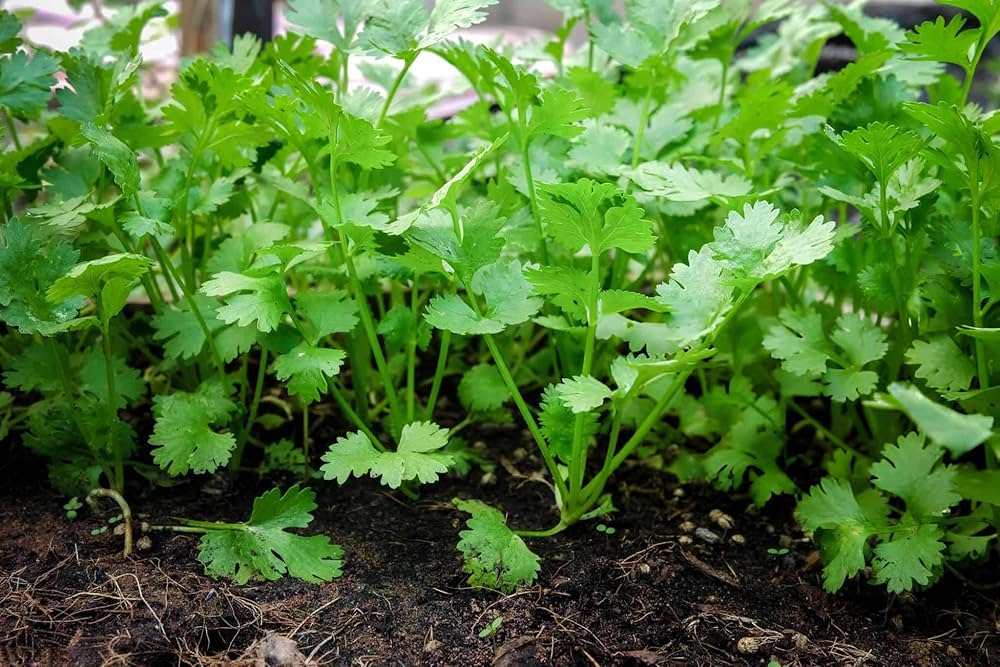
Step 1: Choosing the Right Variety
Coriander comes in different cultivars. For home gardening:
- Slow-bolting varieties are recommended since they delay flowering and produce more leaves.
- Popular options include: ‘Calypso’, ‘Cilantro’, and ‘Santo’.
Step 2: Seed Preparation
- Coriander seeds are actually two seeds encased in a husk.
- For better germination, gently crush the seeds with your fingers or a rolling pin.
- Soak the seeds in lukewarm water for 8–12 hours before planting. This softens the husk and speeds germination.
Step 3: Planting the Seeds
- Choose pots, containers, or garden beds at least 8–10 inches deep.
- Fill with well-draining potting mix (garden soil + compost + sand).
- Sow seeds ¼ to ½ inch deep in rows spaced 6 inches apart.
- Cover lightly with soil and water gently.
- Germination usually occurs within 7–10 days.
Step 4: Caring for Young Plants
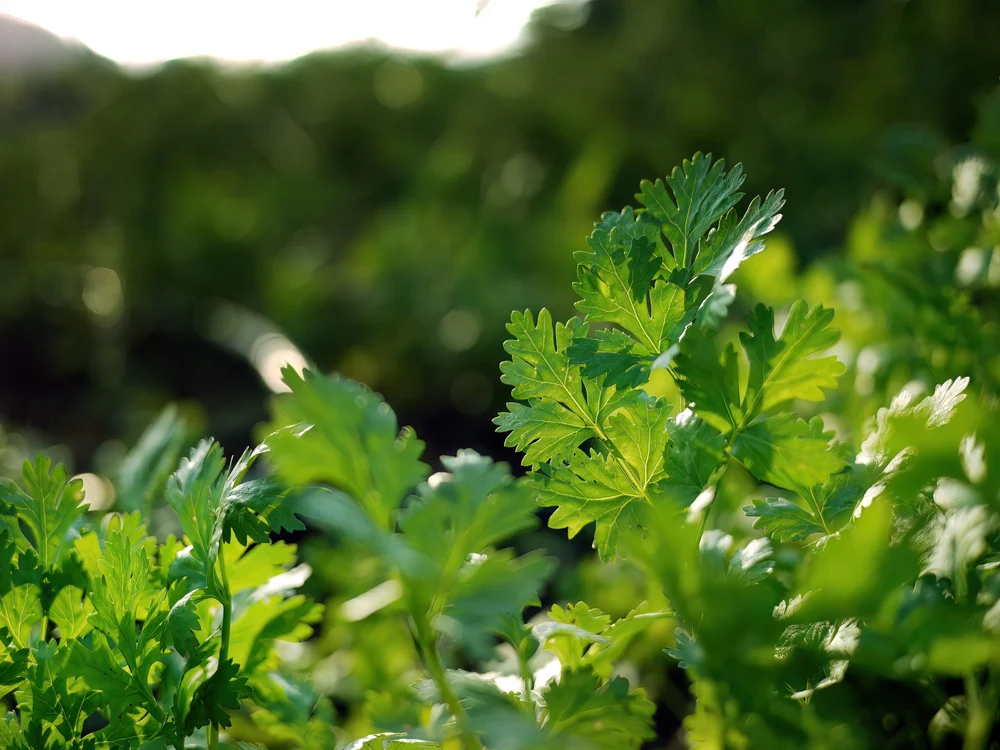
- Thin seedlings to maintain 3–4 inches spacing between plants.
- This prevents overcrowding and allows healthy leaf development.
- Mulching helps retain soil moisture and regulate temperature.
Step 5: Watering Routine
- Water every alternate day or when the topsoil feels dry.
- Avoid splashing water on leaves to prevent fungal issues.
- In summer, misting helps maintain humidity around plants.
Step 6: Fertilizing Coriander
Coriander is a light feeder but benefits from organic nutrition.
- Mix well-rotted compost or vermicompost into the soil before planting.
- Feed plants with a liquid seaweed or compost tea fertilizer every 2 weeks.
- Avoid high-nitrogen fertilizers as they may encourage rapid bolting.
Step 7: Managing Pests and Diseases
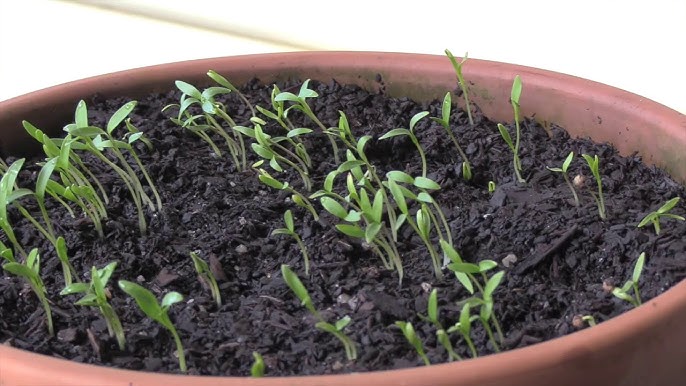
Coriander is relatively pest-resistant, but some issues may arise:
- Aphids & Whiteflies – Suck sap from leaves. Use neem oil spray.
- Powdery Mildew – Appears as white powdery coating. Prevent with good air circulation.
- Root Rot – Caused by overwatering. Always ensure proper drainage.
Tip: Growing coriander alongside companion plants like dill, basil, or mint can help deter pests naturally.
Harvesting Coriander
Coriander can be harvested in two forms: leaves and seeds.
1. Harvesting Leaves
- Start harvesting 3–4 weeks after sowing when plants are about 6 inches tall.
- Snip off outer leaves, allowing inner leaves to continue growing.
- Avoid cutting the entire plant unless you want a one-time harvest.
- Regular leaf harvesting delays flowering and extends the plant’s productivity.
2. Harvesting Seeds
- When coriander flowers and seeds form, let them mature on the plant until they turn light brown.
- Cut the stems, place them upside down in a paper bag, and let them dry for a week.
- Shake the bag to release seeds, then store them in airtight containers.
Growing Coriander Indoors
If you lack outdoor space, coriander can be grown successfully indoors.
- Place containers near a south-facing window for maximum sunlight.
- If natural light is insufficient, use LED grow lights for 12–14 hours daily.
- Keep indoor temperature moderate and ensure good air circulation.
Common Problems and Solutions
- Bolting (Premature Flowering)
- Caused by hot weather or stress.
- Solution: Choose slow-bolting varieties, provide partial shade, and keep soil moist.
- Poor Germination
- Often due to unprepared seeds or planting too deep.
- Solution: Pre-soak and lightly crush seeds before sowing.
- Yellowing Leaves
- Usually caused by nutrient deficiency or overwatering.
- Solution: Add compost and ensure proper drainage.
Tips for Continuous Supply of Fresh Coriander
- Succession Planting: Sow new seeds every 2–3 weeks for a steady harvest.
- Companion Planting: Grow coriander near tomatoes, spinach, or beans to enhance growth.
- Cut-and-Come-Again: Harvest outer leaves regularly without uprooting the plant.
- Container Rotation: Keep multiple pots growing at different stages for year-round coriander.
Nutritional and Culinary Benefits of Coriander
Apart from being easy to grow, coriander is packed with health benefits:
- Rich in Vitamin C, K, and A.
- Contains antioxidants that boost immunity.
- Aids digestion and reduces bloating.
- Supports healthy blood sugar levels.
In cooking, fresh coriander leaves add a burst of flavor to chutneys, soups, curries, salads, and even beverages. The seeds are used in spice mixes, pickles, and marinades.
Conclusion
Growing coriander at home is both simple and rewarding. With just a little care, you can enjoy a continuous supply of fresh leaves and flavorful seeds right from your garden, balcony, or kitchen windowsill. By providing the right soil, sunlight, and regular care, coriander plants thrive and offer you the freshest herbs whenever you need them.
Whether you are a gardening enthusiast or a beginner, coriander is one of the easiest herbs to start with. So, grab some seeds, prepare a pot, and enjoy the joy of harvesting fresh coriander from your own home.
